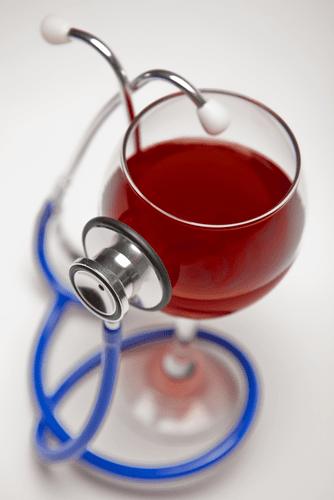Content
While many have described this disorder as dipsomania, the latter term more accurately describes the intense craving that can be a symptom of alcohol use disorder. A maladaptive pattern of drinking alcohol that results in negative work, medical, legal, educational, and/or social effects on a person’s life characterizes the disorder. The individual who abuses this substance tends to continue to use it despite such consequences.
In the DSM-5, alcohol use disorder is further classified into categories of mild, moderate, and severe. While the exact causes of alcoholism are not known, a number of factors can play a role. The condition is likely the result of a combination of genetic, social, psychological, and environmental factors. You spend a lot of time getting alcohol, using it, and recovering from the effects of your drinking. Verywell Mind articles are reviewed by board-certified physicians and mental healthcare professionals.
Anxiety And Agitation In The Intensive Care Unit
Continuing to drink even though your alcohol use is causing problems in your relationships. Getting drunk with your buddies, for example, even though you know your wife will be very upset, or fighting with your family because they dislike how you act when you drink. Experiencing repeated legal problems on account of your drinking.
There are numerous individual treatments for alcoholism, including medical stabilization , individual and group counseling, support groups, residential treatment, medications, drug testing, and/or relapse-prevention programs. Alcoholic and alcohol use disorder is marked by an inability to control alcohol use, despite negative life consequences. It can be hard to recognize when you or someone in your life has a substance use disorder. Understanding the signs of drug addiction can help you decide if it’s time to seek help for yourself or a loved one. Binge drinking is drinking so much at once that your blood alcohol concentration level is 0.08% or more. For a man, this usually happens after having 5 or more drinks within a few hours.

Nonetheless, alcohol should not be recommended for this purpose, especially when there are several safer, more effective approaches to reduce cardiovascular risk. Large amounts consumed rapidly can cause respiratory depression, coma, and death. Large amounts chronically consumed damage the liver and many other organs. Alcohol withdrawal manifests as a continuum, ranging from tremor to seizures, hallucinations, and life-threatening autonomic instability in severe withdrawal . Timberline Knolls Residential Treatment Center is respected nationwide for its treatment of eating disorders, addiction, and co-occurring mental health concerns. And help you determine which type of alcohol addiction treatment is right for you. Drinking to relieve or avoid withdrawal symptoms is a sign of alcoholism and a huge red flag.
Alcoholic Delirium
By keeping you from looking honestly at your behavior and its negative effects, denial also exacerbates alcohol-related problems with work, finances, and relationships. Not all alcohol abusers become full-blown alcoholics, but it is a big risk factor. Sometimes alcoholism develops suddenly in response to a stressful change, such as a breakup, retirement, or another loss. Other times, it gradually creeps up on you as your tolerance to alcohol increases. If you’re a binge drinker or you drink every day, the risks of developing alcoholism are greater. With treatment, about 70% of people with alcoholism are able to decrease the number of days they consume alcohol and improve their overall health status within six months.
- Alcoholism and alcohol abuse can also have an impact on your family, friends and the people you work with.
- Recognizing an AUD comes down to the negative effect of alcohol on the user’s life.
- With regard to alcoholism, BAC is useful to judge alcohol tolerance, which in turn is a sign of alcoholism.
- Parents can also help educate teens about appropriate coping and stress-management strategies.
- Effects of alcohol use disorder on families can include increased domestic abuse/domestic violence.
You experience alcoholtolerance, either by needing more alcohol to get intoxicated or feeling diminished effects when drinking the same amount of alcohol. Jeffrey Juergens earned his Bachelor’s and Juris Doctor from the University of Florida. Jeffrey’s desire to help others led him to focus on economic and social development and policy making. After graduation, he decided to pursue his passion of writing and editing.
Causes of cataracts include diabetes, hypothyroidism, certain genetic illnesses, hyperparathyroidism, atopic dermatitis, and certain medications. Cataract symptoms and signs include a decrease in vision and a whitish color to the affected eye. Recent research describes potential health benefits of consuming alcohol, including decreased risk of heart disease, stroke, and dementia. Given that, it is fair to say that low intake, along the lines of 4-8 ounces of wine per day, is likely safe.
However, problem drinking often begins slowly and many drinkers find that they need to drink increasing amounts in order to feel the original effects of alcohol consumption. A complex combination of genetic and environmental factors influences the risk of the development of alcoholism. Genes that influence the metabolism of alcohol also influence the risk of alcoholism, as can a family history of alcoholism. There is compelling evidence that alcohol use at an early age may influence the expression of genes which increase the risk of alcohol dependence. These genetic and epigenetic results are regarded as consistent with large longitudinal population studies finding that the younger the age of drinking onset, the greater the prevalence of lifetime alcohol dependence.
Who Can I Call For Help With Alcoholism?
As a voluntary facility, we’re here to help you heal — on your terms. Our sole focus is getting you back to the healthy, sober life you deserve, and we are ready and waiting to answer your questions or concerns 24/7. Chronic drinking can lead to diseases like cardiovascular disease and cancers. Alcohol abuse is a leading risk factor in contracting mouth, esophagus, pharynx, larynx, liver and breast cancer.

Another subject, who could not be found, was reported gravely disabled. The Sinclair method is another approach to using naltrexone or other opioid antagonists to treat alcoholism by having the person take the medication about an hour before they drink alcohol and only then. The medication alcohol dependence signs blocks the positive reinforcement effects of ethanol and hypothetically allows the person to stop drinking or drink less. A person will drink to regain that feeling of euphoria experienced in phase 1; the drinking will increase as more intoxication is required to achieve the same effect.
The Prevalence Of Alcohol Abuse And Drunk Driving
As a person now drinks to feel normal, they block out the feelings of overwhelming guilt, remorse, anxiety, and shame they experience when sober. At the third stage there are physical and social consequences, i.e., hangovers, family problems, work problems, etc. A person will continue to drink excessively, disregarding the problems. Prevention of alcoholism may be attempted by reducing the experience of stress and anxiety in individuals. It can be attempted by regulating and limiting the sale of alcohol , taxing alcohol to increase its cost, and providing education and treatment.
Alcohol Abuse Is on the Rise. Here’s Why Doctors Fail to Treat It. – The New York Times
Alcohol Abuse Is on the Rise. Here’s Why Doctors Fail to Treat It..
Posted: Tue, 28 Sep 2021 07:00:00 GMT [source]
Alcohol abuse can have short-term and long-term effects, such as alcohol poisoning, sexual dysfunction, and liver damage. Heavy drinking can cause increased fat in the liver , inflammation of the liver , and over time, irreversible destruction and scarring of liver tissue . Both alcohol-related issues, however, may be effectively treated through a combination of behavioral therapy, medications, and support groups. The terms used to describe problem drinking have changed over time, and for people who aren’t required to know these changes, understanding the differences between them can be confusing.
Symptoms Of Alcohol Use Disorder
There are several screening tools that help with determining whether someone has alcoholism. One tool is known as CAGE – a questionnaire that measures the severity of a drinking problem. If you answer “yes” to two or more CAGE questions, you should seek professional Transitional living medical assistance. What happens to your body after you take your first sip of alcohol? Learn the effects of drinking on your body and mental well-being. It’s important to recognize warning signs and seek help if you’re concerned about having a relapse.
The number of people who struggle with alcohol addiction is staggering. What is even sadder is that many of these people will not receive the help they need. The good news is that most people with an alcohol use disorder will benefit from treatment. While many people will not receive the help they need, those who do seek help are likely to see a positive result from getting rehab for alcohol addiction.
Prevention And Risk Factors
Some individuals will try to rationalize their drinking behaviors. For instance, you may blame other people or certain circumstances for your drinking. Rather than acknowledge the problems you’ve experienced from alcohol, you become defensive when someone mentions your excessive drinking pattern. By refusing to recognize the negative consequences of alcohol, you’re preventing yourself from living a healthy, sober life.

Main-effect results showed that poor behavioral control had a prospective direct effect on abuse symptoms, in addition to its relations with baseline drinking and symptomatology. Abuse symptoms include failure to fulfill social responsibilities, reckless hazardous behavior, socially disruptive illegal activity, and interpersonal conflicts such as physical fights . Our results are consistent with recent item-response studies that suggest some symptoms of “alcohol problems” may be indexing the existence of another correlated process, in this case, poor behavioral control (Martin et al., 2006). Edwards’ concept of plasticity and the biaxial model of dependence and disability (e.g., abuse symptoms) is a useful heuristic for conceptualizing the effects of poor control. Poor control may be conceived of as a pathoplastic agent that affects intoxicated behavior, promoting a range of socially deleterious and risky behavior commonly grouped under the rubric of alcohol abuse. The associations of these factors with problems are often indirect, through influencing level of consumption, rather than directly predictive of use-related problems (Read et al., 2003; Simons & Carey, 2006; Wills et al., 2002). There are few medications that are considered effective in treating moderate to severe alcohol use disorder.
The third stage is characterized by individuals further increasing the frequency of alcohol use and/or using the substance on a regular basis. This stage may also include either buying or stealing to get alcohol. The final and most serious fifth stage of alcohol use is defined by the person only feeling normal when they are using alcohol. During this stage, risk-taking behaviors like stealing, engaging in physical fights, or driving while intoxicated increase, and they become most vulnerable to having suicidal thoughts. Alcoholics may also require treatment for other psychotropic drug addictions and drug dependences.
